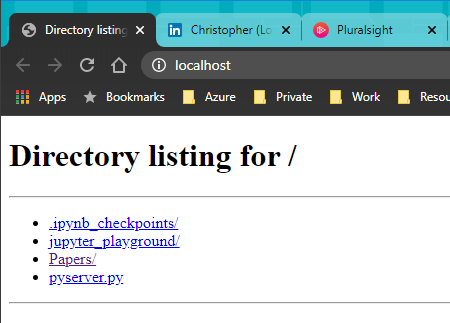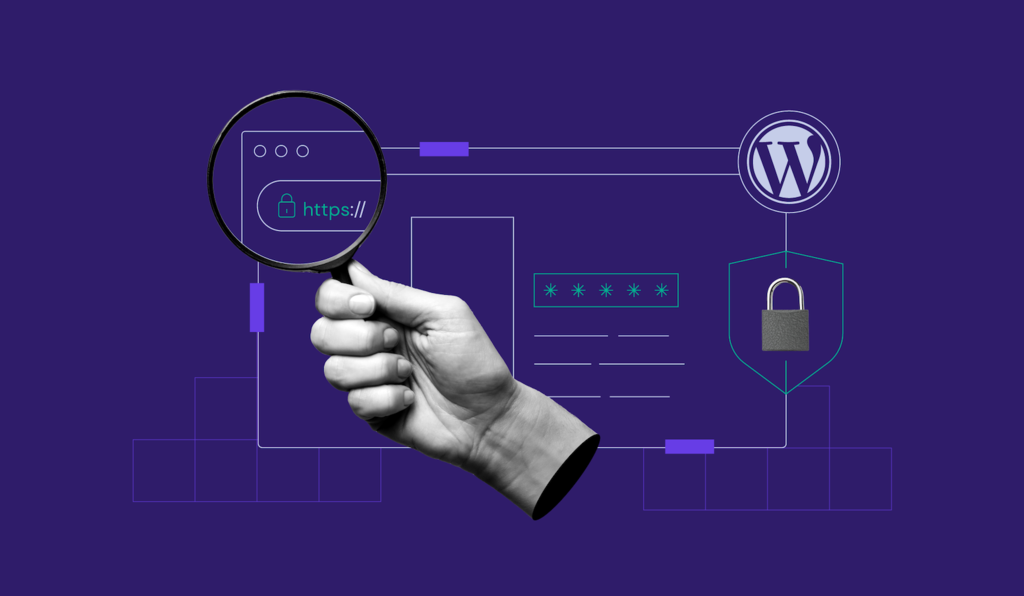
SFTP allows secure file transfer protocols. It secures files by using encryption, public keys authentication, and data integrity checking. This protocol uses a client-server architecture. In other words, it uses separate data and control connections for each server. Its greatest benefit is the ability to send confidential files over the Internet.
SFTP can be used to secure file transfers
SFTP is a network protocol which allows for secure file access and management. It also allows for secure data transfer over a secure stream. It was created by the Internet Engineering Task Force as an extension to the Secure Shell protocol 2.0. This protocol ensures sensitive data can be securely transferred from one place to the next.
SFTP uses encryption as well as public key authentication to make sure that data is safe during transport. Public key authentication prevents data being used for malicious purposes. Encryption protects data during transit. Through usernames and passwords, it verifies the sender's identity. Many organizations use SFTP, from law offices to movie production firms.

It uses encryption
SFTP protects the data it transfers with encryption. This protects data from hackers. Encryption uses public key cryptography to authorize a host machine to access data. SFTP has many ways to use this encryption method. First, you need to generate a pair private and public keys. These keys will be used to encrypt your network before you can send files. Upon reaching its destination, the data becomes readable only to the intended recipients.
SFTP uses a cryptographic algorithm to ensure data security when transferring secure files. The algorithm, usually SHA-2 creates an alphanumeric that is unique. Each data run through the algorithm will generate a unique alphanumeric value. An altered data signal will be given by a different hash. This encryption ensures the integrity of the data, as well as preventing a man-in-the-middle attack.
It uses public key authentication
Public key authentication is a secure means of connecting to an SFTP host. SFTP clients create public and private keys on the computers they use to authenticate with the server. The public key is stored in the client, and the private key is only revealed during an SFTP connection.
Public/private keys authentication works by generating and saving two cryptographic texts files: a publicly key and private key. These keys can be used to allow third-party programs and users to connect. Public key authentication is secure as the private key cannot ever be forgeried.

It employs data integrity checks
To prevent data loss in transmission, the SFTTP protocol employs data integrity checks. These checks are done during the transfer process using encrypted SSH. If the transfer succeeds, the server's program will verify that the file exists in its database. This indicates that the file has been encrypted.
The Internet presents many security threats to data. There are malicious attackers waiting to attack and compromise the security of the data. SFTTP allows sensitive files to be sent securely. To protect sensitive data during transmission, SFTTP uses message authentication codes, ciphers, and encryption.
FAQ
Do I require technical skills to design or build my website?
No. It doesn't matter what HTML or CSS you know. You can easily find tutorials online that teach both HTML and CSS.
How to design a site?
It is important to first understand your customers and what your website should do for them. What are they looking at when they visit your site.
What kind of problems can they have if they cannot find what they want on your site?
Once you know this, you must figure out how to solve those problems. Also, you need to ensure that your website looks professional. It should be easy to navigate.
You should have a well-designed website. You should ensure that your site loads quickly. If it takes too many seconds, people won’t be able stay as long. They will go elsewhere.
It is essential to determine where all your products reside before you start building an eCommerce website. Do they all reside in one spot? Are they spread around your site?
You must decide whether to sell one product only or many products simultaneously. Are you interested in selling one type of product? Or multiple types?
You can start building your site when you've decided on these questions.
Now it is time for you to concentrate on the technical aspect of things. How will your website work? Will it run fast enough? Can they access it quickly via their computers?
Will it be possible to buy something online without paying any extra? Is it necessary for them to register before they are able to purchase anything?
These are essential questions that you need to ask yourself. You'll be able to move forward once you have the answers to these important questions.
What is a UI designer?
Designers of user interfaces (UI) are responsible for creating interfaces for software products. They are responsible to design the layout and visual elements for an application. Graphic designers can also be included in the UI design team.
The UI Designer should be a problem solver who understands how people use computers and what makes them tick.
A UI designer needs to be passionate about software and technology. He/she should be familiar with all aspects in the field, from creating ideas to implementing them into code.
They should be able use a variety of tools and techniques to create designs. They must be able think creatively and find innovative solutions to problems.
They should be detail-oriented, organized and efficient. They should be capable of quickly and efficiently developing prototypes.
They should feel at ease working with clients, large and small. They must be capable and willing to adapt to new situations and environments.
They should be able to communicate effectively with others. They should communicate clearly and concisely.
They should be well-rounded individuals who possess strong communication skills.
They should be motivated and driven.
They should be passionate about what they do.
WordPress is a CMS?
Yes. It's a Content Management System (CMS). CMS is a way to manage your website content without having to use an application such Dreamweaver/Frontpage.
WordPress is absolutely free! Hosting is all you need, and it's usually free.
WordPress was initially designed as a blogging platform but now offers many different options, including eCommerce sites, forums, membership websites, portfolios, etc.
WordPress is simple to install and configure. It is necessary to download the installation file from their site and upload it on your server. Next, simply go to your domain name via your web browser and log into your new site.
After installing WordPress, it's necessary to register for a username. After logging in, you will see a dashboard that allows you to access all your settings.
Here you can add pages and posts, images, menus, widgets and plugins. You may skip this step if you feel comfortable editing and creating content.
You can, however, hire a professional Web designer to handle the whole thing if your preference is to work with another person.
How Much Does it Cost to Create an Ecommerce Website?
This depends on your platform and whether you hire a freelancer or go through a service provider. eCommerce sites typically start at around $1,000.
Once you have chosen a platform, expect to pay between $500 and $10,000.
A template is usually less than $5,000 if you plan to use it. This includes any customizations that you might need to suit your brand.
What Types of Websites Should I Create?
It all depends on what your goals are. To build a business around your website, you may want to focus on selling products online. This can only be achieved by building a solid eCommerce website.
Blogs, portfolios, forums, and other types of websites are also popular. Each one of these websites requires different skills. For example, to set up a website, you need to understand blogging platforms such WordPress or Blogger.
Once you have chosen a platform, it is also important to determine how you can customize the appearance of your site. There are many themes and templates that you can use for free.
Once you have selected a platform you can add content to your website. Images, videos, text, and other media can all be added to your pages.
It is now possible to publish your new website online. Visitors can view your site online once it has been published.
Statistics
- It enables you to sell your music directly on your website and keep 100% of the profits. (wix.com)
- Is your web design optimized for mobile? Over 50% of internet users browse websites using a mobile device. (wix.com)
- In fact, according to Color Matters, a signature color can boost brand recognition by 80%. There's a lot of psychology behind people's perception of color, so it's important to understand how it's used with your industry. (websitebuilderexpert.com)
- When choosing your website color scheme, a general rule is to limit yourself to three shades: one primary color (60% of the mix), one secondary color (30%), and one accent color (10%). (wix.com)
- It's estimated that chatbots could reduce this by 30%. Gone are the days when chatbots were mere gimmicks – now, they're becoming ever more essential to customer-facing services. (websitebuilderexpert.com)
External Links
How To
How do I get started as a UI Designer?
There are two paths to becoming a UI design:
-
You can earn a degree in UI Design by going to school.
-
You can also start your own business.
For you to be able to finish school, you must attend college or university. This includes art, computer science, business, marketing, psychology, etc.
There are also state universities and community colleges that offer classes. Some schools offer free programs, while others charge tuition fees.
After graduation, you will need to find employment. You must establish a client base if you want to work for yourself. It is vital to build a network of professionals so they are aware that you exist.
You can also look for opportunities to intern at companies that specialize in developing web applications. Many companies hire interns to gain work experience before hiring full-time workers.
Your portfolio will help to get you more work. Your portfolio should contain your work samples and details of the projects you worked on.
It's a smart idea for you to send your portfolio by email to potential employers.
You will need to market your services as a freelancer. You can also advertise your services via job boards like Guru, Indeed, Guru, Upwork, and Freelance.
Freelancers often receive assignments from recruiters who post openings online. These recruiters look for qualified candidates to fill specific positions.
These recruiters provide candidates with a project description that details the position's requirements.
You are not required to sign long-term contracts as a freelancer. It is best to negotiate an upfront fee if you intend to move forward.
Many designers prefer working directly with clients, rather than through agencies. While this may seem ideal, many people lack the necessary skills.
Agency workers often have extensive industry knowledge. They have access the right training and resources to ensure they produce high-quality results.
In addition to these benefits, agency workers usually receive a higher hourly rate.
You won't be able to get in touch with your employer directly if you work with an agency.
You must be creative, self-motivated and flexible to succeed as a UI Designer.
It is also important to have great verbal and written communication skills.
UI designers are responsible in designing websites through the creation of user interfaces (UI), as well visual elements.
They are also responsible in ensuring that the site meets all users' requirements.
This includes understanding the information that visitors require and how the site should function.
To create wireframes, UI designers can use a variety of tools. Wireframing helps them visualize the layout of a page before beginning their designs.
It is easy to create your own wireframes using the online templates.
Some designers only focus on UI design. Others combine UI and graphic design.
Photoshop is used to edit images by graphic designers.
Then, they use Adobe InDesign for layout and page design.
Photographers capture images using digital cameras or DSLRs.
They then upload the images to a program for photo editing, where they add text captions and filters.
Afterward, the photographer saves the image in a file format compatible with the website.
It is crucial to consider all aspects when designing a website.
This includes research, planning, wireframing, prototyping, testing, coding, content creation, and publishing.
Research - Before you start a new project, it's important to do thorough research.
Planning – After you've done your research you'll be ready to develop a plan.
Wireframing - A wireframe is a preliminary sketch of a web page or application.
Prototyping -- Prototypes allow you to make sure that your final product is exactly what you imagined.
Testing - To ensure that the prototype works correctly, it should be subject to multiple rounds of testing.
Coding: Coding is the process of writing code for computers.
Content Creation: Content creation can include everything from copywriting to managing social media profiles.
Publishing means uploading files onto a server and making the site accessible.
You will need to have a broad knowledge of different projects in order as a freelance UX/UI developer.
Some companies, for example, only need wire frames. Others require complete prototypes.
Depending on the type of project you accept, you may be asked to complete specific tasks.
For instance, if your job is to create wireframes you might have to make several over the course of time.
You may need to develop a functional version of the site if you are hired to build a prototype.
Regardless of the type of project, it's important to have strong interpersonal skills.
Referring freelancers is the best way to get work. It's important to establish good relationships with potential employers.
In addition, you must be able to communicate effectively both verbally and in writing.
A portfolio is an important part of any freelancer's arsenal.
It showcases your work, and demonstrates your ability deliver high-quality outcomes.
This can be done online by creating a portfolio.
Finding websites similar to yours is the best way to start.
You can then search these websites to find out which one offers its services.
After identifying the best practices that you believe to be most successful, you can go ahead and implement them.
You can also include links to your portfolio in your resume.